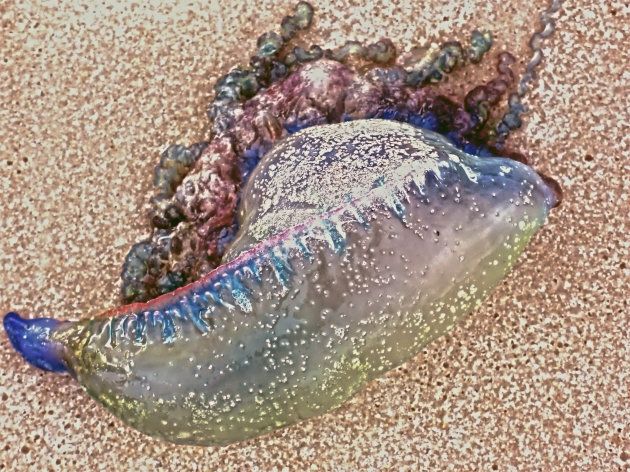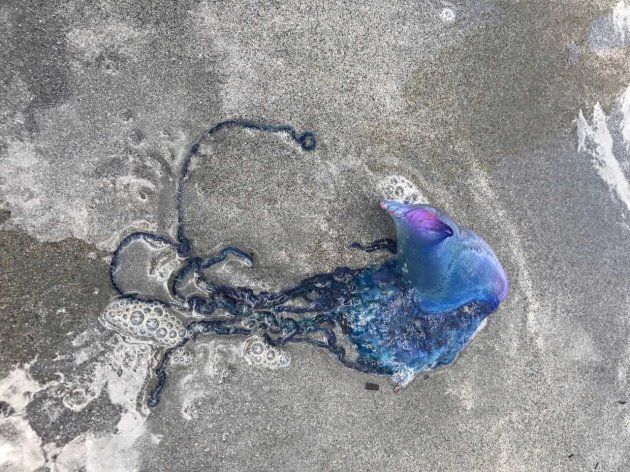It looks like a jellyfish, but it's so much worse.
Dangerous and potentially deadly Portuguese man-of-war have been found in Halifax.
Beachgoer Amy Clark spotted one at Crystal Crescent Beach while out with her boyfriend and young son, thinking it was a toy "because it was so pretty."
"It looked like a little bubble, it was floating above the water," she told CBC News.

"That's not something you normally see with the typical jellyfish around here."
As a wave washed it closer, Clark's boyfriend recognized the sea creature and used a stick to move it away from her son.
Experts are warning people to avoid touching the creatures, also known as a "blue bottle" or the "floating terror."
Dalhousie University master's student Bethany Nordstrom told HuffPost Canada the man-of-war's sting is much more painful than any jellyfish found in Atlantic Canada.

"There's been rare cases where people have died from Portuguese man-of-war stings, but it's usually because they're allergic to them, and they go into anaphylactic shock."
Nordstrom said man-of-war and jellyfish use the same stinging mechanism, which shoots out little harpoons into a person's skin.
"As soon as the tentacles are brushed up against or physically irritated, then they'll shoot out, that's what injects the venom in."
Although normally found in tropical waters, Nordstrom said at least five man-of-war have been spotted in Atlantic Canada in the last two weeks.
If you see something laying there, leave it there.Andrew Hebda, Nova Scotia Museum of Natural History
Although it looks like a jellyfish, a Portuguese man-of-war is actually a siphonophore, a group of animals clustered together that function as one. It cannot control its movement like a jellyfish, and often gets pulled into Atlantic Canada after a period of windy or stormy weather.
Andrew Hebda, zoology curator for Nova Scotia Museum of Natural History, told CTV Atlantic if a man-of-war is picked up, its cells will discharge.
"The point is if you see something laying there, leave it there," Hebda said.
More from HuffPost Canada:
Nordstrom agreed, and said if you see a Portuguese man-of-war floating on the water, "give it space."
"They're kind of like an iceberg, where when you see the float on the water and that's probably the size of a stretch out hand, but they can have tentacles that are a few metres long," she said.
"So if you see one on the water, you never know which way the tentacles are flowing."
Nordstrom is also asking anyone who spots a man-of-war to send a photo and its location to jellyfish@dal.ca.